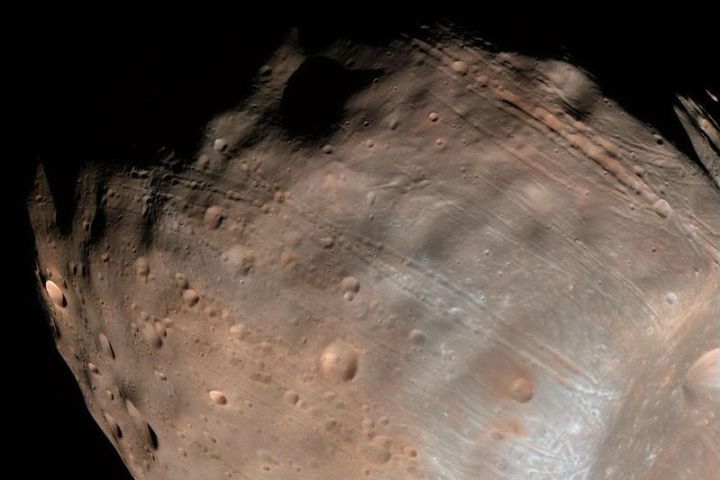
NASA researchers believe that the grooves that mark the surface of Phobos are early signs of the impending breakup, which may occur within the next 30 to 50 million years. Previously astronomers thought that the grooves were the result of a massive meteor impact that occurred on Phobos about 3.6 to 4.3 billion years ago.
Mars’ closest moon moves closer to Mars by about six feet every hundred years, and as Phobos gets closer to the planet’s surface, the gravitational pull increases. Soon these stresses will be too much for Phobos to bear, and it’s likely that the moon will break up completely at some point.
So why does Phobos have such a short time left? There are a few reasons. First is its close proximity to Mars itself. The moon orbits the planet at an altitude of about 3,700 miles, just 1.5 percent of the distance between Earth and its moon. Second is the likely composition of Phobos, which researchers believe may be loosely compacted or completely hollow.
Russian scientist Iosif Shklovsky was the first to present the hollow Phobos idea, using it as a way to explain the moon’s unusual speed and acceleration around Mars. The moon rotates around Mars faster than the planet itself spins, which might be a side effect of Phobos’ low density. While not everyone buys into Shklovsky’s theory, there seems to be consensus that in there is not much holding the interior of the moon together.
Phobos might not be the only doomed planet in our solar system either. Researchers think the same thing is happening to Neptune’s moon Triton, which is also slowly losing orbit and has similar fissures on its surface.
“We can’t image those distant planets to see what’s going on, but this work (on Phobos) can help us understand those systems, because any kind of planet falling into its host star could get torn apart in the same way,” NASA planetary researcher Dr. Terry Hurford says.


